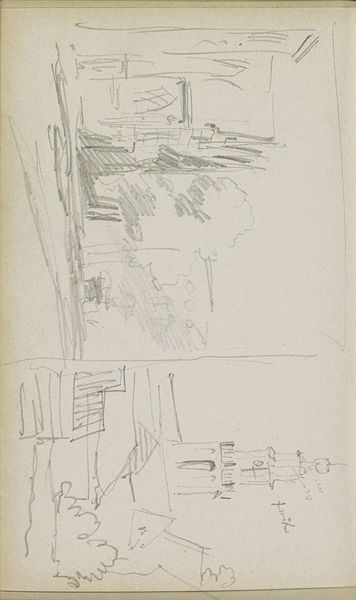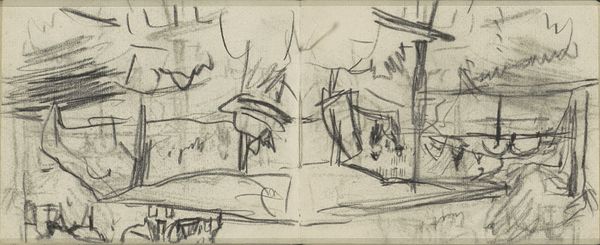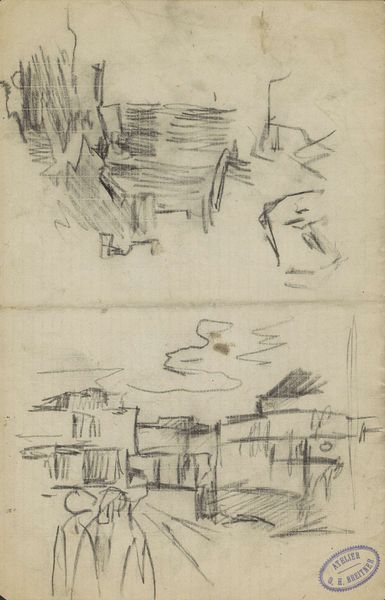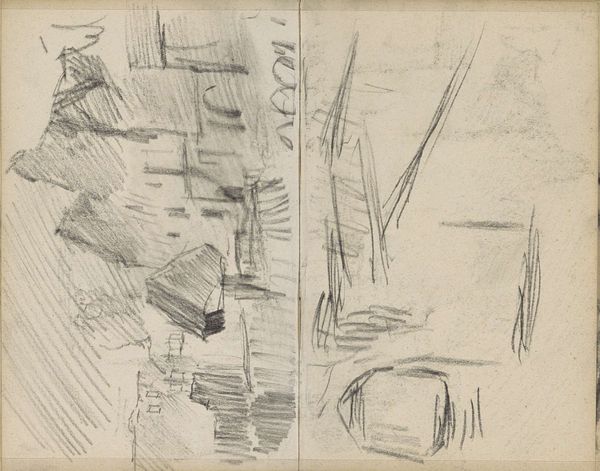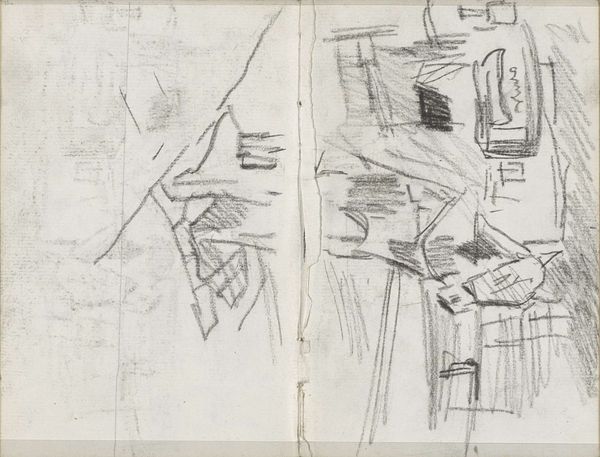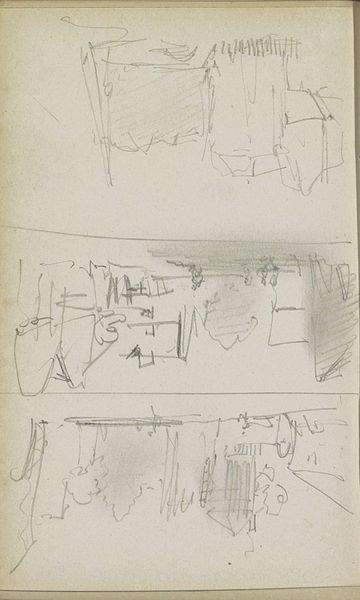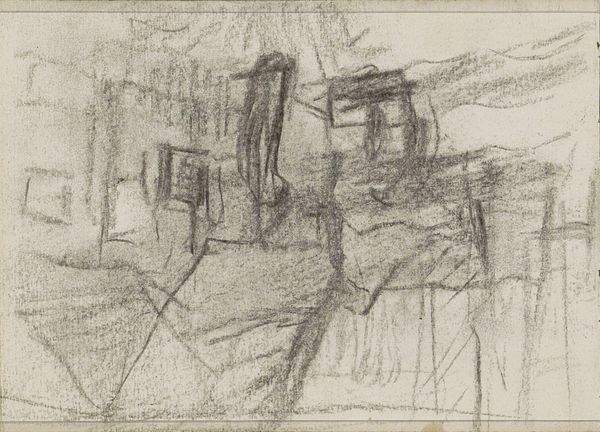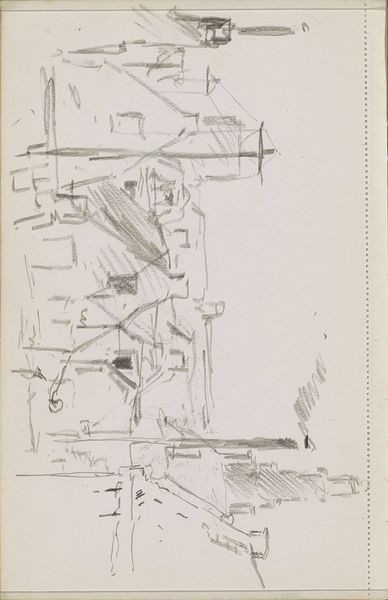
drawing, pencil
#
drawing
#
quirky sketch
#
impressionism
#
sketch book
#
personal sketchbook
#
idea generation sketch
#
sketchwork
#
pen-ink sketch
#
pencil
#
sketchbook drawing
#
cityscape
#
storyboard and sketchbook work
#
sketchbook art
#
realism
#
initial sketch
Dimensions: height 228 mm, width 192 mm
Copyright: Rijks Museum: Open Domain
Editor: This is "Stadsgezicht en een knielende figuur," a drawing by George Hendrik Breitner, made around 1885. It looks like a quick sketch in pencil, a fleeting impression. What can you tell us about it? Curator: What immediately strikes me is the *labor* involved, both Breitner’s and, perhaps more importantly, the subject’s. This is not a grand, finished history painting meant for a salon; it's a sketch, raw, immediate. It shows a glimpse into the process – the materiality of the pencil on paper capturing a worker, perhaps in prayer or in labor itself, kneeling against the backdrop of a city under construction. What was Breitner trying to *do* here? Editor: So you're thinking about the action and the tools? The contrast is certainly visible! Curator: Exactly. Think about the paper he's using – a readily available, cheap material versus the precious metals and canvases often associated with “high art”. It's about production, reproduction and the role of the artist as a recorder of the everyday, even the toiling. The *social* realities embedded in even a humble sketch, especially one like this produced in the rapidly industrializing Netherlands. Does this rawness detract, do you think? Or does the immediacy amplify the work? Editor: I can see how its incompleteness speaks to the labor. It shows a moment in time, like it couldn’t be contained in the space of that paper. It speaks of the effort without a final statement, so in that regard it seems to add power to it, yes. Curator: The act of sketching becomes almost performative then. The rapid lines, the suggestive shapes. I wonder what the broader social commentary is intended to show about laborers. Editor: Looking at it from this point of view does give you insight on an everyday experience. I now see the artistic practice from the sketchbooks into completed work, not something from "high art."
Comments
No comments
Be the first to comment and join the conversation on the ultimate creative platform.

